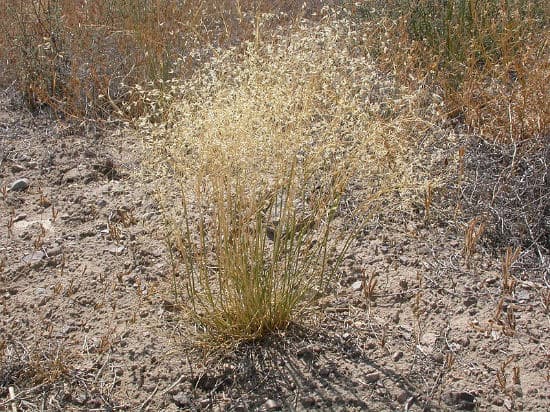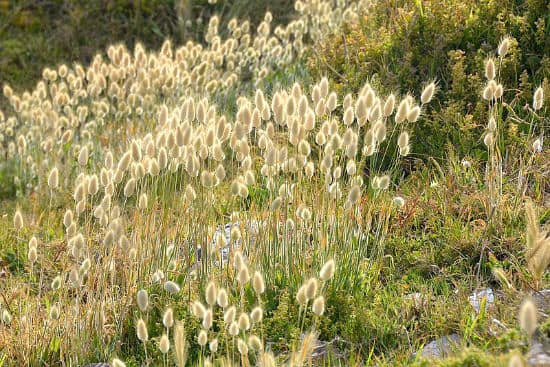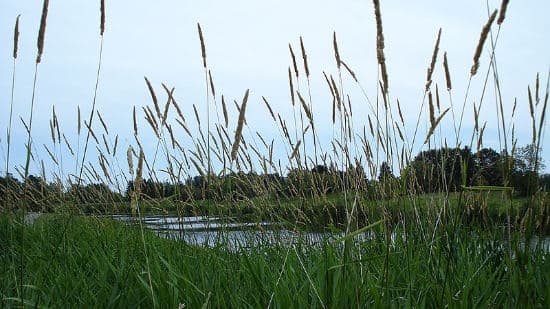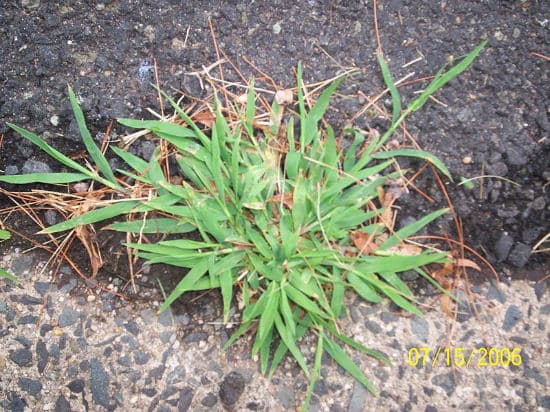There’s a reason you don’t see your neighbors out grazing their lawns, and it’s not because there’s a good restaurant around the corner.
Even though some of our ancestors survived on a predominantly grass-based diet, it’s generally accepted that humans lack the necessary dentistry and digestive system to gain sufficient nourishment from grasses.
There are around 12,000 different grass species in the world, of which only a few are toxic, so if the only restaurant available is a grassy hillock, could we humans survive, and if so, for how long?
Why Can’t Humans Eat Grass?
Our digestive systems weren’t designed for this. Herbivores have a specific process called rumination that enables them to use enzymes to break down grass’s high cellulose content and access the nutrients trapped inside.
Our single-stomached digestive systems aren’t capable of this, and we do not produce enough saliva to facilitate the process of rumination.
Even if our stomachs managed to digest grass, our teeth would suffer, quickly wearing away as they attempted to grind their way through the large amount of silica contained in most grass species.
The third problem is nutrition. Grass has limited nutritional value, hence why animals spend between six and 16 hours a day eating. We literally wouldn’t have time to do anything but eat if we had to sustain ourselves on lawn grass.
Are There Any Types of Grass Can Humans Eat?
Despite this, some grass species are easier to digest and have more nutritional benefits.
Our diets already contain a variety of grasses.
You eat porridge, don’t you, and rice?
What about sugarcane and corn?
These are all made from grasses, though we rarely eat the stem or leaf. Most of the nutritional benefits come from the seeds instead.
In a survival situation, you probably won’t spend hours harvesting tiny grass seeds that will only sustain you for a short period.
Sure, you could collect the seeds and sprout them, increasing their nutritional value, but that could also be challenging if you’re constantly on the move or have a limited water supply.
What about boiling grass?
Boiling grass can make more nutrients available to a human digestive system, but you’d still be looking at a daily intake of around eight pounds of greenery a day if you wanted to survive on the stuff. That’s the equivalent of approximately 4 to 5 medium-sized cabbages!
Despite our limitations, however, the abundance and diversity of grasses mean some types could form a crucial nutritional component to a survivalist diet.
10 Types of Nutritional Grasses That Humans Can Eat
Indian Ricegrass

A type of natural gluten-free bunch grass that grows throughout the western and southern states of the USA, Indian ricegrass has long been included in the human diet as a source of fiber and protein.
The seeds are easily harvested from a mature plant and can be eaten raw, made into porridge, or crushed to make flour, which can then be used to make several types of survival bread.
Nutgrass

This invasive grass species is more often eradicated rather than harvested despite it having some nutritional and health benefits. It’s also used as a diuretic and a stimulant to alleviate stomach problems.
Also known as sedge grass, nutgrass is considered “the world’s worst weed,” but, like many weeds, it’s also edible and even tasty.
See more edible weeds.
The tubers are the most sought-after part of the grass. Depending on the type of nut or sedge grass you’ve found, the tubers have an almond-like flavor or, in the case of the purple nutsedge, an odd menthol one.
Bristle Grass

With their foxtail-shaped seed heads, Bristle grasses are easy to identify and can be found worldwide.
Some species of bristle grass, or Setaria, have even been transformed into commercial crops. In Asia, for example, foxtail millet is grown annually for human consumption and used to make sweet puri – a type of deep-fried bread.
Cattails, which fall into the bristle grass category, provide sustenance, water, and shelter. Known as “the supermarket of the wilds,” their new shoots are a handy snack full of vitamins and essential minerals like potassium and phosphorus. The roots are also edible when grilled, baked, or boiled.
Timothy Grass

Timothy grass, introduced to the US in the 1700s, is commonly grown as fodder for cattle and horses, although its pollen has recently been used to develop a new treatment for hay fever.
Chewing on a blade of Timothy grass may not provide many nutritional benefits, but it has a mild, sweet flavor. Alternatively, you could dry and grind the grass stalks and gain some nourishment from drinking the resulting juice.
Wheatgrass

Wheat is grown worldwide and is one of the most versatile plants on the planet. Fully grown, it is used to produce everything from beer to semolina. Wheatgrass is the young shoots of the wheat plant and contains an abundance of minerals, vitamins, and antioxidants.
Most people make smoothies or juices out of wheatgrass to get the most benefit from it, but if you were patient enough to harvest the seeds, you could make a variety of bread, pastries, pasta, and pizzas.
Barley Grass

Like wheatgrass, barley grass or greens are the first shoots on a new barley plant. A great source of dietary fiber, barley grass is also rich in antioxidants, calcium, and vitamins.
It improves digestion, promotes healthy bones, and reduces cholesterol, making it an ideal survival food.
Most people consume barley grass in liquid form as a juice or smoothie, but with ingenuity, some seeds, and a dash of honey, you could transform it into tasty, energy-boosting snacks.
Canary Grass

Unsurprisingly, canary grass is more commonly used as bird feed than for human consumption, but that’s not to say you couldn’t eat it if it were the only thing available.
Canary grass seeds can be made into porridge or ground into flour. One popular way to enjoy the benefits of canary grass is to turn the seeds into milk, although you’re unlikely to take a blender into the wilderness with you!
Even the young leaves can be cooked and eaten like any other green vegetable.
Canary seed reduces blood pressure and cholesterol and can help you lose weight, although, in a survival situation, that probably won’t be your top priority.
Crabgrass

Loathed as a weed and persecuted as an invasive plant, crabgrass was once king of all it grew on. Each plant produces around 150,000 nutritious seeds you can use to make couscous, flour, porridge, or just pop over the fire like popcorn.
You’ll even find recipes for crabgrass muffins if you look hard enough.
Not only is it edible, but it has some handy medicinal benefits and has been used to treat various issues, including cataracts and gonorrhea.
Sorghum

This flowering grass grows worldwide and is considered one of the world’s top five most nutritional grains. Also known as Durra or Egyptian Millet, sorghum is a nutrient-rich source of vitamins and minerals and a great source of protein.
Naturally gluten-free and highly versatile, sorghum can be boiled or toasted, made into porridge, or ground to produce flour.
It has a mild, slightly sweet taste and a light texture well-suited for baking, although it doesn’t bestow that quality onto the world’s greatest survival food: hard tack.
Wild Oat

Easy to identify and harvest, wild oats are a great survival food, full of fiber, protein, iron, and magnesium.
Like their domestic counterparts, wild oats can be used in sweet and savory dishes, eaten raw, or baked into traditional Scottish Bannocks. Ground into a meal, wild oats are easy to digest, whereas whole, they help reduce the risk of heart disease.
This is by no means a definitive list of all the edible grasses in the world, which also includes:
- Bent
- Blue
- Brome
- Lemongrass
- Slough
- Switch
How Long Could We Survive on Grass?
It’s generally accepted that you can survive without food for up to 48 days if you’ve got an ample supply of fresh water. Throw a few handfuls of ground-up grass seeds into that water daily, and you could keep going twice as long, depending on the species.
How To Identify Nutritional Grasses
Few grasses are toxic unless sprayed with pesticides and herbicides, so you’re unlikely to keel over and die after chewing on a seed. To be on the safe side, always try a little of any wild plant at a time and take any unpleasant flavor or reaction as a warning sign.
This handy little rhyme helps to differentiate between different types of edible grasses:
“Sedges have edges,
Rushes are round,
Grasses have knees where the leaves are found!”
How To Get The Most Nourishment Out of Grass
The most nutritional part of any grass is generally the seed, and the benefits packed inside these tiny kernels can be released by chewing or grinding.
Ground seeds are the most useful as they can be added to water to create a type of porridge or used to make survival bread and other delicacies.
Harvesting the leaves and stems is easier than collecting tiny seeds but less nutritious. The best way to benefit from these parts is to boil them in water and then strain them before drinking. Some grasses, like wheatgrass and crabgrass, can be boiled and eaten like spinach.
Sprouting seeds is one of the best ways to release their superpowers and can be done easily enough, assuming you have water and sunlight.
Conclusion
A diet made up only of grass won’t be enough to sustain you or give you the energy you need to survive. Incorporating some edible grasses into your wilderness diet has its benefits, however, in terms of health and nutrition.
Although our human digestive systems aren’t designed to process the high concentration of cellulose found in grass leaves and stems, the seeds are generally easier to digest and contain essential vitamins and nutrients.
Combined with other foraged plants, nuts, and fruits, some grass species can contribute to a surprisingly healthy diet that could keep you going for months.
Related
Matt Lavin from Bozeman, Montana, USA, CC BY-SA 2.0, via Wikimedia Commons
Zeynel Cebeci, CC BY-SA 4.0, via Wikimedia Commons
Olga Ernst, CC BY-SA 4.0, via Wikimedia Commons
Mokkie, CC BY-SA 3.0, via Wikimedia Commons
Hordeum vulgare, CC BY-SA 4.0, via Wikimedia Commons
Ryan Hodnett, CC BY-SA 4.0, via Wikimedia Commons
The original uploader was Richard Arthur Norton (1958- ) at English Wikipedia., CC BY 2.5, via Wikimedia Commons
Judgefloro, CC BY-SA 4.0, via Wikimedia Commons
Zeynel Cebeci, CC BY-SA 4.0, via Wikimedia Commons


